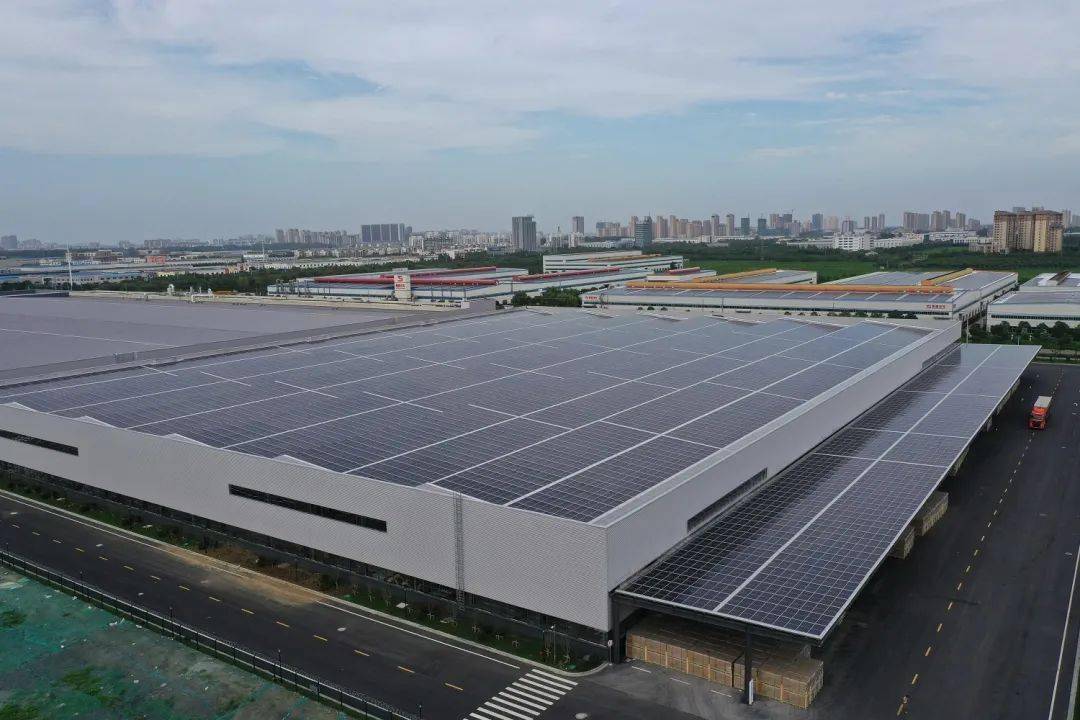集中式大型并网光伏电站就是利用荒漠,集中建设大型光伏电站,发电直接并入公共电网,接入高压输电系统供给远距离负荷。中式大型并网光伏电站一般是级电站主要特点是将所发电能直接输送到电网,有电网统一调配向用户供电。但这种电站投资大建设周期长占地面积大,分布式小型并网光伏系统,就是各家各户利用屋顶进行光伏发电,供用户自己使用,多余的电量并入公共电网。
Centralized large-scale grid connected photovoltaic power stations refer to the use of deserts by the state to build large-scale photovoltaic power stations, which generate electricity directly into the public power grid and connect to the high-voltage transmission system to supply long-distance loads. Chinese large-scale grid connected photovoltaic power plants are generally national level power plants. The main feature is to directly transmit the generated energy to the power grid, and there is a unified allocation of power to users by the power grid. But this type of power station has a large investment, long construction period, and a large area. Distributed small-scale grid connected photovoltaic systems are used by households to generate photovoltaic power on the roof for their own use, and the excess electricity is integrated into the public grid.
分布式光伏电站与集中式光伏电站的并网区别:
Differences in grid connection between distributed photovoltaic power plants and centralized photovoltaic power plants:
分布式基本原则:主要基于建筑物表面,就近解决用户的用电问题,通过并网实现供电差额的补偿与外送。
Distributed basic principle: mainly based on the surface of buildings, to solve the electricity consumption problems of users nearby, and to achieve compensation and external transmission of power supply differences through grid connection.
优点:
Advantages:
光伏电源处于用户侧,发电供给当地负荷,视作负载,可以有效减少对电网供电的依赖,减少线路损耗。

Photovoltaic power supply is located on the user side, generating electricity to supply local loads as loads, which can effectively reduce dependence on grid power supply and reduce line losses.
充分利用建筑物表面,可以将光伏电池同时作为建筑材料,有效减少光伏电站的占地面积。
By fully utilizing the surface of buildings, photovoltaic cells can be simultaneously used as building materials, effectively reducing the floor area of photovoltaic power plants.
与智能电网和微电网的有效接口,运行灵活,适当条件下可以脱稿电网独立运行。
Effective interface with smart grids and microgrids, flexible operation, and independent operation of the grid under appropriate conditions.
缺点:
Disadvantages:
配电网中的潮流方向会适时变化,逆潮流导致额外损耗,相关的保护都需要重新整定,变压器分接头需要不断变换,等问题。
The direction of the power flow in the distribution network will change in a timely manner, and the reverse flow will cause additional losses. Relevant protection needs to be reset, and transformer taps need to be constantly changed.
电压和无功调节的困难,大容量光伏的接入后功率因数的控制存在技术型难题,短路电力也将增大。
The difficulties in voltage and reactive power regulation, as well as the technical difficulties in controlling the power factor after the connection of large capacity photovoltaic, will also increase the short-circuit power.
需要在配电网级的能量管理系统,在大规模光伏接入的情况下进行负载的同一管理。对二次设备和通讯提供了新的要求,增加了系统的复杂性。
The energy management system at the distribution network level needs to manage the same load in the case of large-scale photovoltaic access. New requirements have been placed on secondary equipment and communication, increasing the complexity of the system.
集中式光伏电站:
Centralized photovoltaic power station:
集中式基本原则:充分利用荒漠地区丰富和相对稳定的太阳能资源构建大型光伏电站,接入高压输电系统供给远距离负荷。
The basic principle of centralization: fully utilize the abundant and relatively stable solar energy resources in desert areas to build large-scale photovoltaic power stations, and connect them to high-voltage transmission systems to supply long-distance loads.
优点:
Advantages:
由于选址更加灵活,光伏出力稳定性有所增加,并且充分利用太阳辐射与用电负荷的正调。
Due to more flexible site selection, the stability of photovoltaic output has been increased, and the positive adjustment of solar radiation and electricity load has been fully utilized.
运行方式较为灵活,相对于分布式光伏可以更方便的进行无功和电压控制,参加电网频率调节也更容易实现。
The operation mode is relatively flexible, making it more convenient to control reactive power and voltage compared to distributed photovoltaics. Participating in grid frequency regulation is also easier to achieve.
建设周期短,环境适应能力强,不需要水源燃煤运输等原料保障,运行成本低,便于集中管理,受到空间的限制小,可以很容易地实现扩容。
Short construction period, strong environmental adaptability, no need for raw material guarantee such as water source and coal transportation, low operating cost, easy centralized management, and limited by space, it can easily achieve expansion.
缺点:
Disadvantages:
需要依赖长距离输电线路送电入网,同时自身也是电网地一个较大地干扰源,输电线路的损耗电压跌落无功补偿等问题将会凸显。
It is necessary to rely on long-distance transmission lines for power transmission into the grid, and at the same time, it is also a major source of interference to the power grid. The problems of loss, voltage drop, reactive power compensation, etc. of transmission lines will become prominent.
大容量的光伏电站由多台变换装置组合实现,这些设备的协同工作需要进行同一管理,目前这方面技术尚不成熟。
Large capacity photovoltaic power plants are implemented by combining multiple conversion devices, and the collaborative work of these devices requires the same management. Currently, this technology is not yet mature.
为保证电网安全,大容量的集中式光伏接入需要有LVRT等新的功能,这一技术往往与孤岛存在冲突。
To ensure the safety of the power grid, large capacity centralized photovoltaic access requires new features such as LVRT, which often conflicts with isolated islands.
With the summary on distributed photovoltaic power generation, I hope it can be helpful to our customers. If you have any questions or need help, please click on our website: http://www.zdnygf.com Or call for consultation, and we will do our best to solve it for you



 TEL:0531-82390078
TEL:0531-82390078 TEL:18805312017
TEL:18805312017 MAI:sdzdny001@163.com
MAI:sdzdny001@163.com 公司地址: 济南市历下区山大路157号
公司地址: 济南市历下区山大路157号 天合蓝天·山东种电
天合蓝天·山东种电 备案号:鲁ICP备17052940号-2
鲁公网安备37010202700164号
备案号:鲁ICP备17052940号-2
鲁公网安备37010202700164号
 网站地图|XML|TXT
网站地图|XML|TXT

